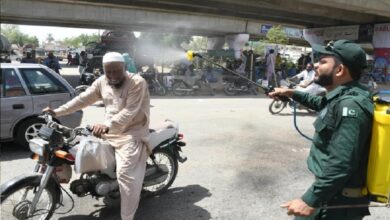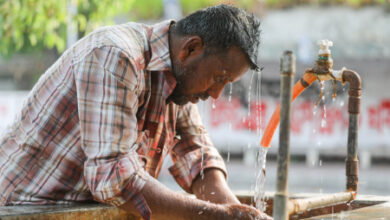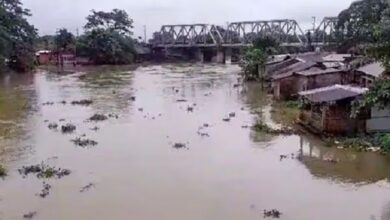Climate and China fears are bringing South Asia’s countries closer
An electricity deal between Bangladesh, India and Nepal is a hopeful sign for tighter trade ties

DELHI AND KATHMANDU: FOR MUCH of June the 23m individuals around Dhaka, Bangladesh’s funding, experienced in temperature levels of as much as 38°C. Followers and also air-conditioners were of little usage—the nation experienced power cuts on 114 of the initial 150 days of this year. Simply 500km to the north, the Himalayan republic of Nepal encountered the contrary issue. The nation’s need for power peaks at 1.7GW yet generation ability—virtually totally from hydropower—comes to a head at 2.8GW. Authorities have actually been informing nuclear power plant to reduce manufacturing to stay clear of destabilising the grid.
The inequality might quickly begin to be remedied. A trilateral offer in between Bangladesh, India and also Nepal, anticipated to be settled in weeks, would certainly see a few of Nepal’s excess power circulation to power-starved Bangladesh through India’s transmission facilities, beginning with a moderate 50MW. Sceptics disregard it as a rounding mistake in Bangladesh’s shortage. At top times require surpasses supply by as much as 25%, according to evaluation by Reuters. Yet to concentrate on the quantity of power can be found in from Nepal is to misread. That it is occurring in all is an innovation in an area where neighbors have checked out each various other with uncertainty for years. Viewers wish this offer will certainly lay the structure for an extra incorporated power market in the area.
3 instant elements have actually aided the offer gain energy. The initial is the increasing price of power. South Asia has actually had a hard time to satisfy its requirements on worldwide power markets, which have actually been interfered with by the battle in Ukraine. Second, South Oriental nations are managing the facts of environment adjustment, with heatwaves and also floodings coming to be a lot more constant and also extreme. Third is an expanding wariness of China, whose assertiveness around the Mountain range has actually pressed India to pay even more focus to its smaller sized neighbors.

South Asia is amongst the least financially incorporated areas on the planet, so any kind of rise in profession might have succulent advantages. Yet national politics has actually long stood in the means. India’s laden connection with Pakistan is the largest difficulty. Yet in Nepal and also Bangladesh, as well, political and also various other turmoil protected against development. Nepal was riven by civil battle till 2006 and also experienced a destructive quake in 2015. Anxious concerning Indian supremacy and also eager to check out various other alternatives, over the last few years it had actually started to look to China. India and also Bangladesh have arguments over every little thing from sharing river water to prohibited migration. As just recently as 15 years earlier, states Tariq Karim, a previous Bangladeshi ambassador to India, “you had individuals in Bangladesh claiming, we don’t desire Hindu power, we’d rather go dark”.
Having actually invested rather a great deal of time in the dark, Bangladeshis are currently reevaluating. The nation’s natural-gas books, which make up two-thirds of its usage, are decreasing and also might be diminished within the years, making it a lot more depending on imports of melted gas (LNG). Abundant European nations increased rates of LNG in 2015 as they looked for choices to Russian gas, making it tough for Bangladesh to strike long-lasting handle vendors and also compeling it to switch over to a lot more pricey oil and also gasoline plants. That diminished its money books and also left it not able to pay for sufficient gas. In addition, Bangladesh has actually vowed to lower its carbon discharges by greater than 20% by 2030, which calls for reducing its use nonrenewable fuel sources.

Nepal, at the same time, has actually bet a lot of its economic-development method on future sales of hydropower to its neighbors. In 2014 it began exporting 400MW of power to India; this year it struck a bargain to export an extra 600MW. A more 5GW of ability is incomplete. If the wager falls short to settle, both the federal government, which has a syndicate on the acquisition and also sale of power, and also the nation’s exclusive power manufacturers will certainly wind up with a stack of financial obligation and also incomplete jobs. “If these offers don’t exercise, we’re doomed,” states Ashish Garg, a hydropower financier.
Combination is additionally essential to South Asia’s green-energy change. Nepal and also Bhutan have in between them an approximated capacity of almost 70GW of hydropower, just a tiny portion of which has actually been established. Bangladesh has little sustainable ability and also inadequate room to include sufficient wind and also solar. India prepares to mount 500GW of sustainable ability by 2030. To satisfy its predicted power need in 2040 it will certainly require to include 950GW of ability generally, concerning the dimension of Europe’s power market, along with its existing 418GW. Hydropower from its neighbors would certainly assist provide a steady standard of renewable resource. The advantages of cleaner power should settle in the temporary, as well, in the kind of even more breathable air in the area’s cities, which are a few of the globe’s most contaminated.
India has actually traditionally hesitated to participate in multilateral power offers, favoring reciprocal contracts such as import handle Nepal and also a brand-new long-lasting contract to offer coal-fired power to Bangladesh from an Indian plant near the boundary. Yet it is “eager to develop connection in the area to respond to China, and also power is a much less harmful means of doing so than, state, sell various other points,” states Sanjay Kathuria of Georgetown College in Washington, DC. Narendra Modi, India’s head of state, has actually prioritised connections with the nation’s neighbors. In 2021 he took a trip to Dhaka for a friendly tête-à-tête with Sheikh Hasina, Bangladesh’s head of state. In Might he held Pushpa Kamal Dahal, Nepal’s head of state, in Delhi.
![Men carry children on their shoulders and wade along a flooded road, following rains and floods during the monsoon season in Nowshera, Pakistan [File: Fayaz Aziz/Reuters]](https://www.southasiancorrespondent.com/wp-content/uploads/2023/08/climate-4.webp)
Difficulties continue to be to much deeper power assimilation. The principal difficulty is the absence of grids to move power around the area. Existing high-voltage lines in between the 3 nations are currently strained. Brand-new ones are prepared (see map) yet their building is interfered with by land-acquisition issues and also an absence of funding, particularly in Nepal, whose federal government has no cash for brand-new lines yet rejects to allow the economic sector develop them. Bangladesh and also Nepal are lobbying India to permit the building of a committed line for power profession in between its 2 neighbors throughout its region. Yet India has actually thus far demurred and also is not likely to transform its mind anytime quickly. Environment adjustment, as well, might get worse the issue: melting glaciers, landslides and also altering river circulations might provide a few of Nepal’s hydropower capacity unviable in the coming years.
India has little option yet to avert from coal if it is major concerning its net-zero objectives. Bangladesh, as well, will certainly need to lose its dependence on nonrenewable fuel sources. To guarantee a steady, safe and secure power supply from renewables, the neighbors will certainly need to link their grids, liberalise their power markets and also harmonise their governing programs. The little trilateral sell the jobs today might prepare for this grand aspiration, states Prabal Adhikari, that manages power sales at the Nepal Electrical Power Authority. “It’s a percentage, yet it implies all the guidelines, requirements and also standards will certainly remain in area to export a lot more in the future.”




